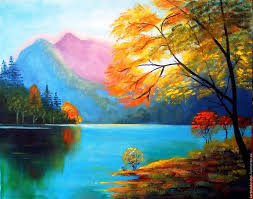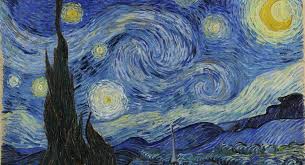RUSSIAN ACADEMY OF ART OF ST. PETERSBURG (part 2)
 Under Catherine II, in 1764, a new detailed Charter of the Imperial Academy of Arts was adopted, and the close sovereign Ivan Ivanovich Betskoy became president. The Empress wrote: “For better encouragement and success, We, having taken this Academy into Our patronage … determine it to be under our sole Imperial jurisdiction, providing it with the amount necessary for its maintenance.” In the early period of the reign of Catherine II, a kind of “state utopia” of enlightened Russia arose, and the Academy of Arts had to play an important role in creating a visible image of the transformed empire.
Under Catherine II, in 1764, a new detailed Charter of the Imperial Academy of Arts was adopted, and the close sovereign Ivan Ivanovich Betskoy became president. The Empress wrote: “For better encouragement and success, We, having taken this Academy into Our patronage … determine it to be under our sole Imperial jurisdiction, providing it with the amount necessary for its maintenance.” In the early period of the reign of Catherine II, a kind of “state utopia” of enlightened Russia arose, and the Academy of Arts had to play an important role in creating a visible image of the transformed empire.
Catherine II described her reign in a letter to her permanent correspondent, ambassador of the tiny German state of Saxe-Goth in Paris, Baron Melchior Grimm, ironically alluding to one of La Fontaine’s fables and, in addition, to the “precedent” indispensable for thinking of an enlightened man of that era from of ancient history: “… there is no more goat or cabbage, there is only Pyrrhus, king of Epirus, whom every sculptor must sculpt, every painter – write and all poets to sing …” The image of the kingdom of fine arts, where passion rules inyat laws, it is essential for understanding the “utopia” of the Empress. In it, the civilization of the state, expressed in the legislative improvement of the country, was combined with the aesthetically meaningful new character of the living environment. At the same time, the reforms of the legislator were aesthetically colored, and the art policy acquired the features of state rules that were binding. The “arbiter of elegance” in this context was the Imperial Academy of Arts.
In the Catherine period, the construction of the Academy of the grand ensemble building on Vasilyevsky Island in St. Petersburg was carried out. The original project, commissioned by I.I.Shuvalov, J.F. Blondel, was redone by J.B. M. Wallen-Delamot and A.F. Kokorinov became the manifesto of classicism in Russian architecture, a model on which generations of Russian architects studied.
Catherine II, in her own words, presented the buildings created during the years of her reign as “future antiquity”, which after thousands of years will be considered along with antiquity. This was necessary for the empress in order to give her actions and buildings the character of an appeal to eternity. Such constructions as the building of the Academy of Arts, in the views of the empress, were equated with antiquity, became perfect, like a classical ideal.
For the first fifty years of its history, classicism dominated the Academy in a stylistic sense, although by the end of the 18th century works with features of early romanticism and sentimentalism began to appear. Nevertheless, the main thing for this era was the creation in Russia of a school of classic art, not inferior to any of the European ones. On the contrary, Russian classicism developed rapidly and powerfully, not only following Western standards, but also realizing those plans that remained only on paper in the West. V.I.Bazhenov and I.E. Starov, the first graduates of the Academy, created works that laid an exceptionally high standard of artistic quality of architecture, their followers and students of the Academy of the next generations changed the living environment of the country – created a classic Russia, and each city received a regular plan and ceremonial buildings with white columns. Developing the Imperial Academy of Arts, I.I. Betskoy, following Catherine II and in accordance with her thoughts, saw the creation of a new living environment and a new enlightened person, especially about the artist as a single process. It was not for nothing that the words “Painting. Sculpture. Architecture. Education “. It was at this time that the foundation was laid for the classical method of art education in Russia, combining professional training and the development of moral principles, which already in the 19th century would be one of the main features of Russian art. The stylistic unity of Russian art was manifested in the predominance in sculpture and the most valued then historical painting features of classicism, present in the works of F.I.Shubin or I.P. Martos, A.P. Losenko or I.A. Akimov.




